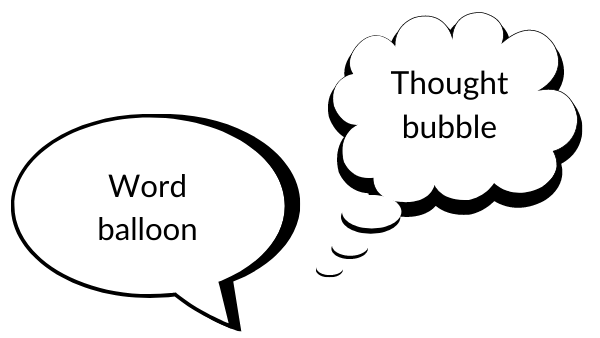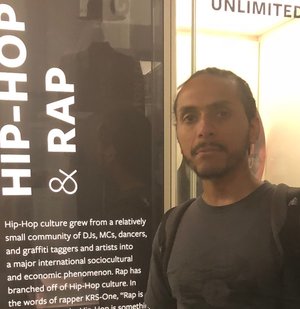A big thank you to Ruben Mina, LMSW for this guest post!
Can you tell me the history of your community?
Can you tell me some histories of your community?
Yes, histories.
Do you ever ask these questions of adolescents with whom you work? There is a distinction between the two questions. The first question focuses on one story: the prevailing story of how a community came to be what it is. It feels like asking adolescents to pull something in from the past, make sense of it and connect to it.
The second question asks adolescents to tell histories of their community. It invites them to share the who, what, how, and why about the people, institutions, political forces, cultures, and much more that make their community dynamic. Like adults, adolescents have a range of experiences in the communities to which they belong that are rooted in traditions they observe, inequities or injustices they endure or witness, and forms of oppression about which they are aware. They deserve the space to tell their stories. Each individual experiences and interprets life in their community in ways that cannot, and should not, be captured by a single history. By creating space for adolescents to share their varied perspectives and experiences, we are supporting their social and emotional development.
This is not about adolescents being unable to make sense of standard accounts of history. Nor is it about making up stories. It is about engaging adolescents in critical thinking and critical dialogue so that the histories they see, feel, and live each day are amplified. This deepens their connectedness to their respective communities, cultivates empathy, and provides a foundation for them to work collectively to transform their communities.
Mapping histories
While both questions at the beginning of this blog post could create opportunities for shared learning, focusing on multiple histories of a community does more. It invites adolescents to further develop self-efficacy by telling and showing one another the ways they view the world around them. Youth-serving programs want to build adolescents’ sense of self-efficacy, while letting them know that their voices matter. We let them know their voices matter when the learning that happens in human service organizations honors their perspectives.
Earlier in my career, I developed a group activity called “Community Stories” as a way to center adolescents’ experiences, while facilitating their exploration of ways they could transform their communities. This activity has helped adolescents in the Bronx in grade levels ranging from upper elementary school to high school identify and raise awareness about issues such as domestic violence and a lack of neighborhood parks that were impacting their daily lives.
Community Stories take the form of maps that reflect adolescents’ insights about experiences they have in a community to which they belong. It integrates numerous concepts and approaches, including: popular education concepts (participatory, group-oriented), photovoice, and community asset mapping, as well as literacy-building activities. The maps require basic art supplies and no art skills; they are animated by the dialogue adolescents engage in about the ways a group 1) experiences a shared community and 2) envisions its transformation.
This activity allows adolescents to explore a community they identify with in creative, empowering ways, and is intended to engage them in a communal exercise. Constructing maps to tell community stories allows adolescents to reimagine their communities and envision their transformation. By trusting and engaging the expert wisdom of adolescents’ lived experiences, you are letting them know that you value their agency.
Before creating maps, the group must identify a community to which they feel connected and would like to represent on a map. Since communities are not strictly defined by physical borders, it is vital to encourage consideration of non-geographic communities (i.e. community of teen activists). This is crucial for two reasons. First, adolescents are in the developmental stage of exploring membership in groups based on interest, values, and identity, not solely geography. Secondly, this allows for greater inclusivity, particularly for adolescents who experience oppression or marginalization as a result of others’ targeting them based on identity or perceived identity.
These maps are populated by what I have termed “characters” (feel free to use different terminology). “Characters” are representations of those elements that impact adolescents the most (i.e. institutions, places, events, policies). As a facilitator, I have found it helpful at this stage to engage adolescents in naming the dynamic relationships between people and other elements of a community and the meanings of such relationships.
Below is a description of the activity, with facilitator instructions.
Creating the maps
Benefits of the activity:
- Build community around shared experiences of oppression and/or shared visions of transformation
- Promote critical thinking and critical dialogue
- Identify dynamics that impact adolescents’ lives, while encouraging their self-advocacy
Framing questions to ask at the beginning, and revisit throughout to encourage dialogue:
- What comes to mind when you think of the word ‘community’?
- What do communities consist of?
- How can we understand a community?
- Are people the only entities that have stories to tell about the communities we belong to?
Step #1 – Map design
Ask participants to name a community they belong to and want to transform and/or take action in response to an inequity and/or oppression that has been individually or collectively experienced. Instruct the group to create a map that features “characters” (i.e. places, buildings, institutions, policies, rules) that comprise their community (geographical or non-geographical). Pay attention to group dynamics to ensure an equity of voices in the decisions of what gets placed on the map. For non-geographical communities, participants could use systems, policies, and/or institutions as “characters” that impact the community. Relationships and power dynamics can be shown by giving “characters” different sizes (i.e. the bank is the biggest thing on the map because of its impact on the community’s economic state).
Step #2 – Mapping the story
Introduce the word balloon for dialogue between “characters” on the map and thought bubble to see the inner thoughts of a given “character”, and explain their purposes.

Present the reflection questions below and instruct participants to use word balloons and thought bubbles to represent dialogue between the “characters” about the transformation or oppression that was identified in step #1. Reflective questions may include:
- What would each “character” say about its experience with, or observations about, the oppression or vision of transformation that was identified?
- What observations has each “character” made about the oppression or vision of transformation?
- If we could read the thoughts of each “character,” what would we learn?
Participants should then discuss the questions or other questions that may resonate with the group and write responses on the word balloons and thought bubbles. Participants can then place the shapes on the corresponding “characters” on the map.
Step #3 – Expanding the story
Introduce two tools (adapted versions of “flashback, flash-forward” and “hot-seat the character”) that the group will use to engage in critical dialogue. Prompt the group to think about what the “characters” would say if they could flashback or flash-forward in time. For example, if a park is represented on the map, a flashback question could be: what would this park have said was its experience with gentrification 10 years ago?
Next, invite a group member to “hot-seat” another “character”. Group members then get to pose questions to the “character” that are discussed as a group. The focus can be on expanding upon what was written in the word balloons/thoughts bubbles, or what was shared in the flashback and flash forward discussions. For example, a group member might “hot-seat” a group mate’s school “character” and ask: why do you want school administrators to do more to make families feel welcome in the school? Such a question, and others, could engage the group in deeper discussions about school-community relationships.
Step #4 – Processing, closing, action steps
This final step provides a way for the group to reflect on their experiences going through the activity. The group may also draw connections to potential future actions they could take related to the issues represented on their maps. I have found sitting or standing in a circle with the map inside of the circle as the most engaging way to facilitate this step.
The questions below are recommended, but are not the only ones that you could ask.
- What common themes or differences emerged during the process?
- What can we do to learn more about the community? Is there someone with whom we can talk? Is there someplace we can visit?
- Is there any action around shared visions of transformation, or shared experiences of oppression that we would like to explore?
These steps are about adolescents’ ability to make meaning of their community, and treats them as the subjects of their own learning. My experiences facilitating Community Stories have shown me that adolescents grow more comfortable discussing issues that resonate with their individual and collective identities when given the space to do so. While that can take various forms, hopefully, Community Stories will serve as another approach that you can use with adolescents who are looking to change their communities.
The views, information and opinions expressed herein are those of the author; they do not necessarily reflect those of the Council on Accreditation (COA). COA invites guest authors to contribute to the COA blog due to COA’s confidence in their knowledge on the subject matter and their expertise in their chosen field.

Ruben Mina, LMSW
Ruben Mina, LMSW, is a social work community practitioner with close to 15 years of experience in youth development and education. He currently works for the New York City Department of Education alongside an amazing group of folks who are dedicated to achieving equity for students in all schools and districts throughout New York City. His work involves leading workshops for educators on topics like implicit bias awareness, racial equity, and anti-oppression. He also works with educators at the school- and district-levels on creating equitable policies and practices. He serves on the Masters Exam Committee for the Association of Social Work Boards. As a born and bred Brooklyn native, he loves music from any and everywhere, and classic Twilight Zone episodes. He is excited to begin pursuing a doctoral degree this fall.
The Interpretation blog is meant, first and foremost, to be a resource for the COA community. We had several 2019 posts that our editorial team was proud of, but wanted to take a moment to highlight those that we feel are most helpful to organizations thinking about accreditation or going through the accreditation process.
The Benefits of Organizational Accreditation

When it comes to accreditation, we at COA believe strongly in a whole-organization approach. This post explores why we do things that way and how an organization stands to benefit from looking at themselves with a holistic lens. Find the post here.
Roadmap to Preparing for the Accreditation Process

Once an organization decides to pursue (re)accreditation, it can be difficult to know what step to take first! This post does a great job of walking through the considerations of preparing your team for the process and making sure that your workflow sets you up for success. Find the post here.
PQI: A Whiteboard Video

Some of the most common questions we get at COA revolve around what “Performance and Quality Improvement” means, why we emphasize it so much, and why organizations should care about it, too. This post (and its whiteboard video!) offers a nice, succinct introduction to what PQI is and why it matters. Find the post here.
The How and Why of Strategic and Annual Planning

Developing formalized plans can seem overwhelming, so some organizations might be tempted to put it off. But planning is an important part of the accreditation process, and essential to making sure that you carry out your mission! As its title suggests, this post explores both the why and how of strategic and annual planning. Find the post here.
Top 5 Tips and Tricks for Primary Contacts

The Primary Contact (an organization contact that communicates with COA throughout the accreditation process) is key to making sure that accreditation goes smoothly. If it’s your first time through, the job can seem intimidating. Fortunately, this post (sourced from real COA Accreditation Coordinators) has plenty of tips to help! Find the post here.
Bonus: Profiles in Accreditation
If this is your first time through the accreditation process (or you just want to hear tips from other COA-accredited organizations about making the best of it!), check out our Profiles in Accreditation post series. Launched in 2019, it contains interviews from a variety of organizations who describe first-hand what they got from accreditation, how they handled the workload, and more. Checkout the series below!
- Profiles in Accreditation: Ranch Ehrlo
- Profiles in Accreditation: Rose Brooks Center
- Profiles in Accreditation: Lad Lake
- Profiles in Accreditation: Family Service Lincoln
And there you have it! What were your top posts for 2019? Share your thoughts in the comments below.
So, you’ve been designated by your organization as the Primary Contact—the point person for communicating with the Council on Accreditation (COA) and spearheading the accreditation process. Maybe you’re feeling a little overwhelmed; you might not be sure about the best way to get the job done. Fear not! We’re here to help with tips on how to make the process as smooth as possible, whether this is your first time managing the accreditation process or your fifth.
1) Get organized

If we were to create a job description for the Primary Contact role, strong organizational skills would be first on the list of required traits. You need to be able to organize, prioritize, and project manage. This includes assessing the scope of the work, identifying available/necessary resources, and planning for the completion of tasks while working towards deadlines.
There are a lot of moving parts during the accreditation process, so it is critical to stay on top of due dates and important notifications from COA. You also need to make sure that these are communicated within your organization, and that you clearly outline expectations regarding the workload and workplan for other staff to maintain efficiency.
Sound like a lot? Don’t worry! We have some resources that can help those efforts. Here are a few to get you started:
- SELF-PACED TRAINING: Getting Organized/Creating a WorkplanThis self-paced training provides guidance on coordinating and managing the work of the self-study process, with the goal of developing a comprehensive accreditation work plan.
- BLOG POST: Roadmap to Preparing for the Accreditation Process Another handy, step-by-step guide to help you get a handle on the various tasks involved with accreditation.
- BLOG POST: Creating Effective Workgroups on the Road to AccreditationGet tips on how to organize and delegate work to different staff.
- MYCOA PORTAL: Your Standards and Self-Study StepsWe built the MyCOA Portal with the goal of setting you up for success. The Standards & Self-Study tab (option five in the blue navigation bar at the top of the screen) is one good example of this: it features a checklist of steps to complete during the Self-Study process; a progress bar to help you track how you’re doing; and links to important documents to help you along the way.
2) Communicate clearly and often

The accreditation process centers around good internal and external communication.
From an external standpoint, as the Primary Contact you are responsible for overseeing all communications between your organization and COA. Whether it is over the phone or email, it is essential to keep your Accreditation Coordinator in the loop about any significant program updates or organizational changes.
From an internal standpoint, it is important to have staff, management, and your governing body appropriately informed of the process. This will not only help everyone work together to get things done, but also ensure that accreditation’s benefits are felt organization-wide.
Pro tip: Maximize your relationship with your Accreditation Coordinator
COA partners with organizations throughout the accreditation process. A key component of that partnership is the relationship between the Accreditation Coordinator and you, the Primary Contact. Here are a few suggestions on how to capitalize on this unique benefit.
- Schedule – and really use to your advantage! – a monthly call, especially if it’s your first time going through the process. Having the time carved out on your calendar ensures that you have time specifically dedicated to accreditation each month. (Ex: “I have my call with my Coordinator next week and I haven’t looked at the FPS standards yet – let me get on that now!”) We understand that everyone has a million things going on in addition to accreditation, so blocking off time for checking in and asking questions is one way to stay on top of things.
- Check out our extensive accreditation resources first before bringing any additional/clarifying questions onto your call. This will make sure that you’re using your time with your Accreditation Coordinator as productively as possible.
- Involve other staff members in the monthly calls. Not only can this be a more efficient way to get everyone on the same page, but it also makes the process more team-driven and rewarding. This allows other staff members to “get to know” the COA voice on the other end of the phone to experience the partnership firsthand.
- Whether for scheduled calls or when staying in contact in general, it is helpful for Accreditation Coordinators when Primary Contacts gather and send questions all at once, especially very specific standards questions. This is particularly beneficial when it comes to monthly check-in calls. If questions are sent over (in one email) a few days before the call, it gives the Accreditation Coordinator time to prepare and touch base with their team/the Standards Development Department as needed, which maximizes your time and makes for a productive conversation.
3) Be transparent

Transparency is another critical factor to your success as a Primary Contact. This goes hand in hand with being a good communicator.
We often say that the Self-Study process is like holding a mirror up to your organization. This works best for everyone when the mirror is a clear one! Your Accreditation Coordinator is there to provide technical assistance and targeted support, but they can only do so if you communicate honestly about your struggles so that they can help you navigate your pain points. Identify your organization’s needs and be eager to ask questions.
This advice applies when communicating within your organization as well. Often, we find that one staff member doesn’t always hold all the knowledge/documents that are necessary to complete the accreditation process; therefore, it is important that you approach other staff and pull them in as a resource when needed.
4) Get involved

We’ve already highlighted the importance of working with your Accreditation Coordinator – they are there to answer questions, interpret the standards, and guide you through the process. But don’t forget about all our other resources that are there for you to tap into!
If it’s feasible time- and budget-wise, attending our live Intensive Accreditation and Performance and Quality Improvement trainings can be very impactful, particularly if you or your organization are new to the accreditation process. We hold these trainings a few times a year. They are a great resource not only for taking a deeper dive into managing accreditation and learning strategies to enhance your PQI system, but also for networking with (and learning from!) colleagues that are in the same boat as you. Attending these is not a prerequisite for being a stellar Primary Contact, of course, but they are helpful if you can make it to them.
COA also has a plethora of self-paced trainings, tip sheets, tool kits, and more. Your MyCOA Portal will offer suggestions of which of these will work best for you at different points in the accreditation process. Be sure to use it! You will find everything that you need there to successfully navigate the process. The portal is secure, customized and will always include the specific information that is relevant to your organization.
Digging into these resources will provide you with a good overview of 1) how COA is going to review your organization, and 2) all the major milestones you need to hit along the way. This will help you to grasp the amount of work needed and the different deadlines that your organization is going to approach. Knowing these will help you guide others in your organization toward success.
Pro tip: Find your tribe
COA lists all our accredited organizations on our public website. Use the Who is Accredited Search to find peer organizations by location or service area. This practice can help you create a network and empower you and other Primary Contacts to access resources, share information, and ultimately make the most out of the accreditation process.
5) Be an accreditation cheerleader

Getting through the accreditation process is all about creating and maintaining momentum with your team. COA’s review is very comprehensive, and so it includes many potential ways for different staff to participate. Establishing and championing those opportunities can contribute to making accreditation more fun, rewarding, and successful.
We encourage Primary Contacts to tap into their creative side. Try developing a game that incorporates COA’s accreditation standards or creating a fun visual that tracks your progress. Your job is all about being a good motivator, so celebrate the victories both big and small. With as hard as you’re working, you all deserve it!
Though being a Primary Contact can feel like a lot of responsibility, rest assured that accreditation is by no means a one-person job. The process–from pulling together Self-Study evidence to preparing for the Site Visit–should be a team effort. Your role, then, is of a team captain. With these tips, we hope you can get out there and lead your crew to success!
Further reading
If you want to do a deeper dive, we’ve pulled together some additional resources below. Don’t forget to also check out those linked directly in your MyCOA portal.
